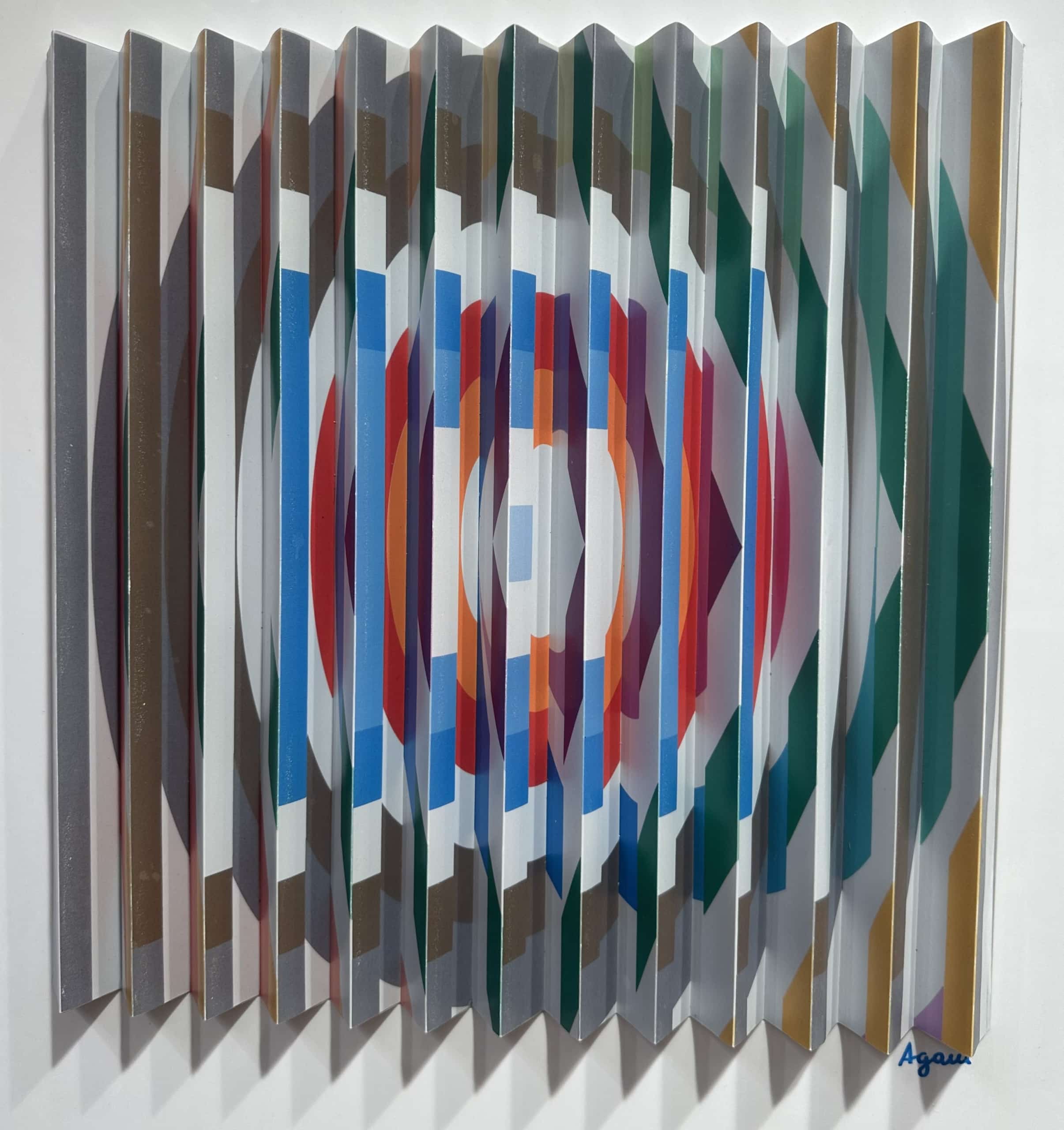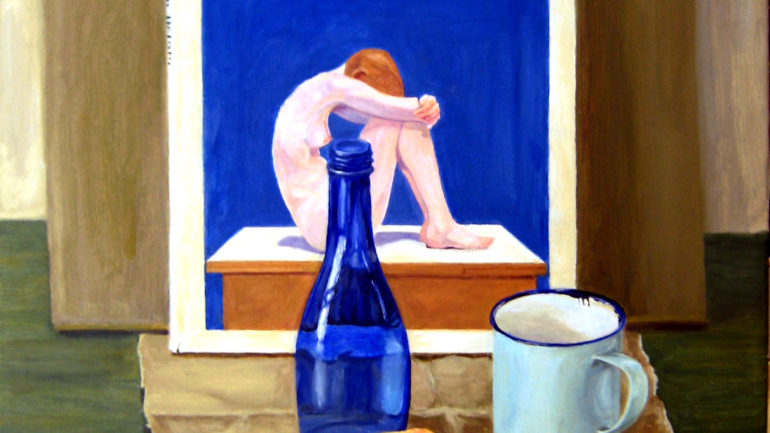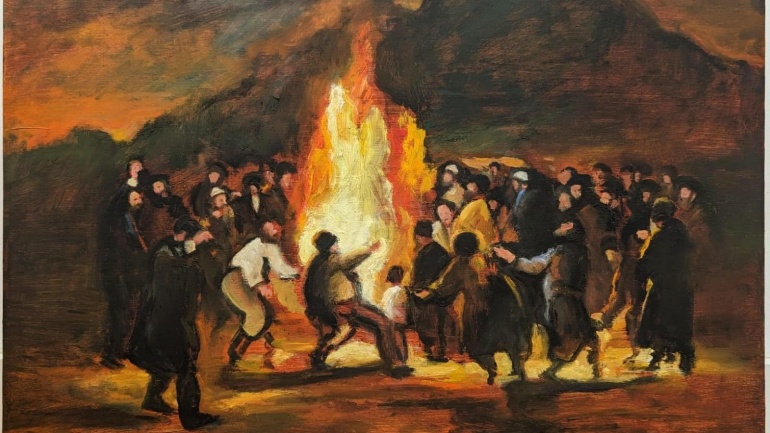Looking at a work by Yaacov Agam is never passive — it’s an experience. His colorful polygraph (35 x 35 cm) is no exception. At first, you see color. Then you notice form. Finally, the entire piece begins to shift before your eyes. This is not just a painting. It’s a dynamic conversation between motion, viewer, and time.
Agam’s signature style is immediately clear: bold geometric shapes, rhythmic patterns, and a palette that pulses with life. In this piece, color bars and nested ellipses interact across a folded surface. From one angle, the composition radiates warm reds and oranges. From another, cooler blues and greens emerge. This fluid transition is intentional. It turns the viewer into a participant — the artwork changes as you move.
Notably, Agam was a founding figure in the kinetic art movement, and one of Israel’s most internationally celebrated artists. Inspired by the teachings of Bauhaus, De Stijl, and abstract mysticism, his work redefined how we engage with visual space. Rather than portraying a fixed image, Agam sought to activate it — to make it alive.
This polygraph demonstrates that vision. Each fold of the surface becomes a tool of transformation. The eye is drawn to the center, where concentric shapes suggest harmony. But then, the pattern fractures, bouncing color outward in every direction. This creates both balance and tension — a signature Agam effect.
3D
Moreover, the three-dimensional construction plays with light and shadow. As the ambient light shifts, the shadows across the folds create new rhythms. Thus, the work becomes a living structure, always in flux, even when physically still.
The artist’s signature appears clearly at the bottom — a quiet affirmation of authorship in a world of visual motion. Though small in size, this piece embodies Agam’s grand philosophy: that reality is not static, and that art should mirror the ever-changing nature of perception and life itself.
Besides, check our blog about the unique scroll of Esther with original serigraphs. Agam’s interest in experiments with the volume perceptions and colours reflects in the geometrical prints that resemble vision illusions. In addition, take a look at “Black Hole”, the print on wood, which is a study on the perception of volume.
Our gallery
Kings Gallery is a leading fine art gallery established in Jerusalem in 1995. With over 20 years of experience, we strive to collect and sell the highest quality historic and contemporary Israeli and International art. The gallery specializes on artists from the early period of the 1920’s. We have a large variety of original works and lithographs by leading Jewish, Israeli, and international artists. In addition, Kings Gallery features leading up-and-coming young artists who will definitely be prominent names in the next few years.






3 Comments
plise zebra perde
This is my first time pay a quick visit at here and i am really happy to read everthing at one place
beyaz bambu zebra perde
For the reason that the admin of this site is working, no uncertainty very quickly it will be renowned, due to its quality contents.
Bennett Gould
Awesome! Its genuinely remarkable post, I have got much clear idea regarding from this post